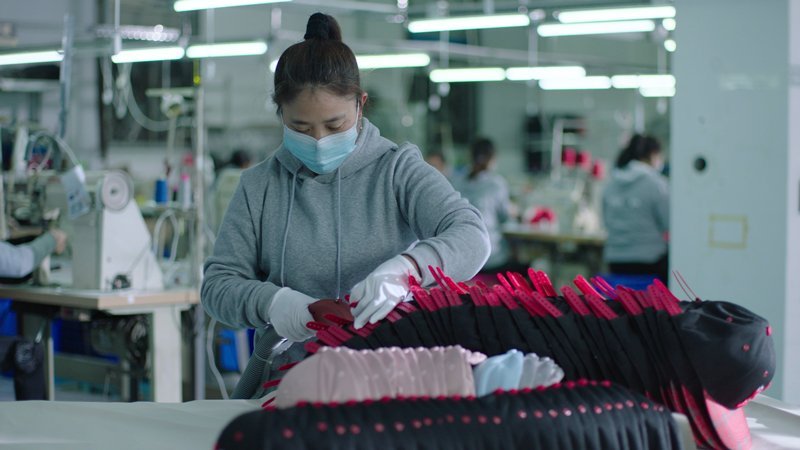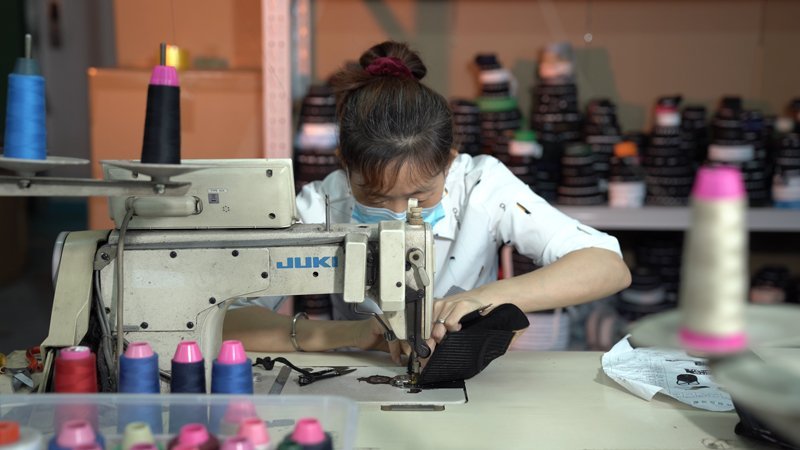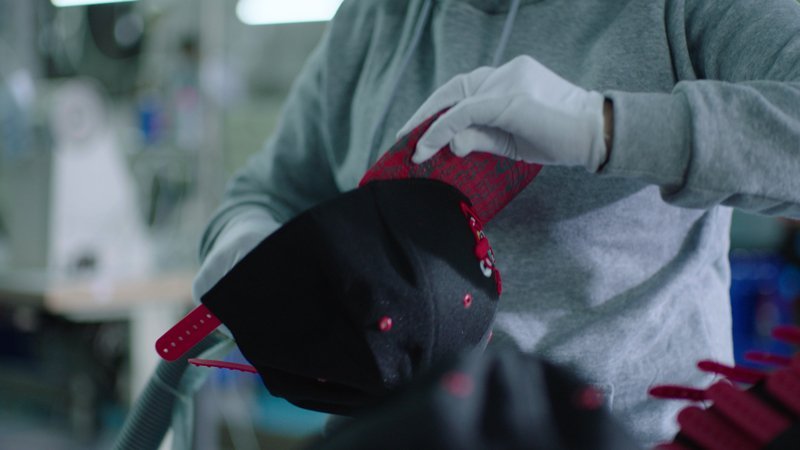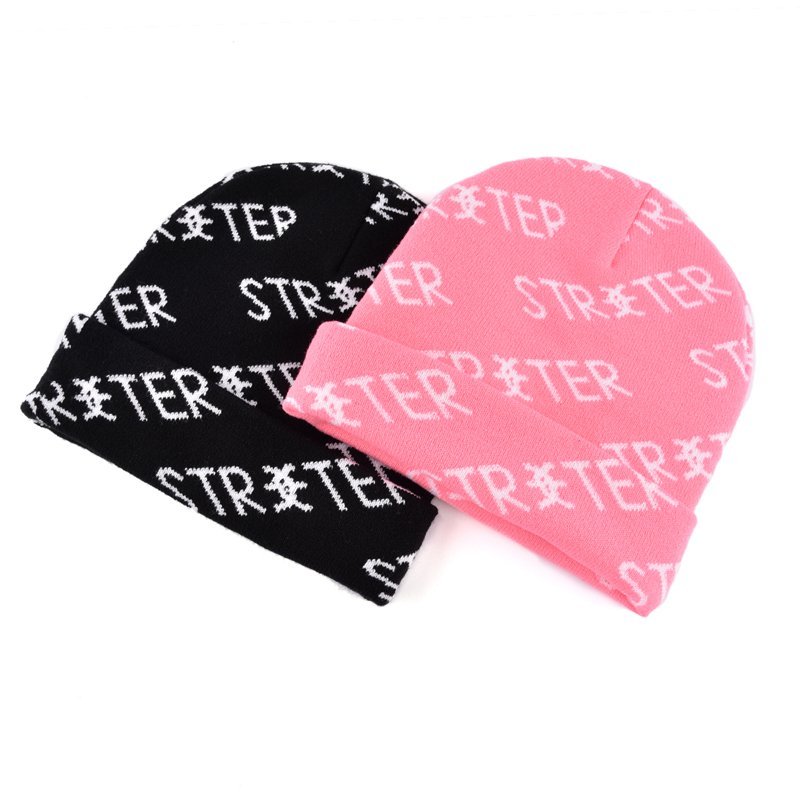The shrinkage problem of knitted fabrics is mainly related to factors such as the fiber properties, plasticity, and structural characteristics of the fabric.

Table of Contents
ToggleThe situations that are prone to occur during the production process
In the production process of printing and dyeing and weaving, the following situations are inevitable for knitted fabrics:
1. The hot and humid environment of printing and dyeing processing;
2. In the production process of knitted fabric printing and dyeing, efforts have been made to create conditions for the knitted fabric to be processed under low tension or no tension. However, it is impossible to completely avoid tension in the production process of knitted fabric. The presence of tension causes the fabric to be stretched longitudinally, resulting in a decrease in fabric density and deformation of the fabric;
3. The knitted fabric is dried away from the stable state;
4. The processing of yarn and knitting of knitted fabrics also involves latent tension.

Specific manifestations of shrinkage problems

Due to the existence of the above situations, it will bring a series of problems that cause shrinkage hazards to knitted fabrics. Specific performance:
1. Due to the wet and hot state of dyeing and finishing, water molecules enter the amorphous region of the fiber, reducing the force between molecular chains. At this point, under external forces, the molecular segments undergo displacement, causing the fiber to elongate. If it is dried in this extended state, hydrogen bonds are formed at new positions between the fiber molecular chains, and the extended portion of the fiber fails to retract back to its original state. The stability of this deformation under wet and hot conditions is unstable.
2. Knitted fabrics are formed by interlacing loops, which have the most stable structural form. If the knitted fabric is in a stable structural state, it is in a dimensionally stable state and does not shrink when exposed to water. However, in the actual production process, the fabric, especially the longitudinal direction of the fabric, is subjected to large and repeated tensile forces, resulting in plastic deformation of the yarn fibers, longitudinal elongation of the fabric, narrowing of the width, and coil transfer. The fabric structure is far from the stable state of the fabric. This state is unstable and has a tendency to return to its original stable state under appropriate conditions.
3. When the knitted fabric is dried under an extended condition, it appears to be stable on the surface, but in fact this “stability” is temporary.
4. In the process of yarn processing and fabric weaving, the yarn is affected by drafting and tension, resulting in potential tension, which can also cause the retraction of the yarn fibers.
The main reasons for the shrinkage of knitted fabrics
In summary, the reasons for the shrinkage of knitted fabrics are:
1. The recovery of fiber deformation under hot and humid conditions. When cotton knitted fabrics are washed in a relaxed state, water molecules can break the newly formed hydrogen bonds, relaxing the internal stress and causing the stretched parts to retract, resulting in shrinkage.
2. Recovery of deformation of knitted fabrics. When the structure of knitted fabrics is far from the stable state, the plasticity of fibers increases during wet washing, and the restoring force is strengthened to produce deformation recovery, elongation and retraction. Cotton knitted fabrics shrink and return to their original stable state, which is the main cause of shrinkage in cotton knitted fabrics.

3. The fiber absorbs moisture, causing the yarn diameter to increase, resulting in yarn shrinkage and resulting in shrinkage. The increase in yarn diameter causes the length of the yarn to decrease, resulting in the contraction of the fabric (including length and width), and an increase in density.
The above is the basic reason for the shrinkage of knitted fabrics. As for the factors affecting the shrinkage of knitted fabrics under different conditions and the shrinkage situation, such as different fiber composition knitted fabrics, different tissue structures of knitted fabrics, different dyeing and finishing processes and equipment, whether the fabric has been mercerized, stentered, pre-shrunk, etc., it remains to be practiced, explored, summarized, improved and improved.
Control of shrinkage rate of knitted fabric printing
To overcome the problem of high shrinkage rate of cotton knitted fabric, combined with the characteristics of printing on knitted fabric in the state of flat width, the following measures and methods can be taken:
1. Loose processing minimizes the tension in each process during the printing and dyeing production process. It is best to avoid plastic deformation of the fabric in the wet state, and avoid the elongation of the fabric and fibers. In fact, the printing enterprises consider loose processing methods in the dyeing and finishing processes of knitted fabrics, such as the selection of knitted fabric printing and pre-treatment, post-finishing equipment, and adopt many effective methods of loose processing. It is believed that with the development of knitted printing and knitted printing equipment, the loose processing of knitted fabrics will continue to be improved. In addition, shortening the printing process has also attracted attention in production and has been put into practice. The adoption of the above measures will definitely benefit the reduction of plastic deformation of knitted fabrics in the wet state, avoid the elongation of fabrics and fibers, and reduce fabric shrinkage.
2. Overfeed drying is to achieve relaxation drying, reduce tension effects, and make the fabric approach a fully balanced state. Before knitted fabric printing, overfeed drying can be combined with pre-printing stretch setting process to timely grasp overfeed and dry the fabric, so as to achieve the goal of reducing fabric shrinkage rate.
3. Mechanical pre-shrinking is carried out using specialized mechanical pre-shrinking equipment. First, overfeed is applied to the fabric to make the fabric longitudinally relaxed, allowing room for pre-shrinking. Then, steam is applied to the fabric to enhance its plasticity in the relaxed state, relaxing the internal stress of the fabric. Finally, the fabric is longitudinally contracted and laterally expanded or longitudinally compressed through diffusion, forcing the longitudinally elongated portion of the fabric during weaving or dyeing and finishing to retract, resulting in a relaxed structure of the fabric. In this state, the fabric is loosely dried to achieve the effect and purpose of pre-shrinking. Mechanical pre-shrinking is one of the effective measures to overcome the large shrinkage rate of knitted fabrics.
Other measures to reduce the shrinkage rate of fabrics
1. Reduce tension during the refining and bleaching process;
2. During the dyeing and finishing process, the tension should be fully released when drying wet cloth to reduce the elongation and avoid excessive narrowing of the width. If the machine is used for continuous drying after opening, a small cloth box should be added after opening to prevent excessive tension between the opening and the watering process;
3. During the mercerizing process, it is important to maintain the effective width of the unbleached cotton cloth by controlling the width tension and carefully manipulating the weft tension;
4. The guide rollers, rollers, and drying drums of the flat washing machine in each process should be strengthened to ensure smooth and clean conditions, avoiding wrinkles when the tension is relaxed. The guide rollers in the water tank should operate freely. The linear velocity difference between the front and rear rollers of the same machine should not be too large. The tension should be controlled so that the cloth does not drag on the ground. During the segmentation process of the long table, there should be a tension adjustment and lifting device or a segmented transmission adjustment device to manipulate the tension level;
5. The mercerized product should be strictly controlled. During the subsequent processing, the tension due to the elongation after mercerization, the warp shrinkage rate can be set in each process during the actual production operation. The effective width indicators of the semi-finished products should be established in each machine station for measuring and assessment. The subsequent process should be subject to acceptance inspection of the previous process to ensure the effective width of the semi-finished products;
6.For some machinery, the tension needs to be manually manipulated, the process operation needs to be strictly controlled, the mechanical cleaning needs to be strengthened, and the operating tension needs to be reduced to effectively reduce the shrinkage rate of the fabric;

7. Strengthen the inspection of the processing conditions of mercerization, and dyeing plants with the necessary conditions can use a combination of straight rollers and cloth clips for mercerization;
8. Varieties with large longitudinal shrinkage rates: such as khaki, gabardine and poplin fabrics should be pre-shrunk to reduce the shrinkage rate. In these varieties, when processed in a tight manner, relying solely on mechanical tension release, the good shrinkage rate can be as high as 4%. This shrinkage rate should be further reduced by adopting a pre-shrinking method. After pre-shrinking treatment, the product not only has a reduced shrinkage rate, but also achieves a good hand feel, clear texture, light and soft luster.
9.For varieties with large zonal shrinkage rates, some due to the unreasonable effective width of the grey cotton, even with reasonable processing conditions, there is still a large zonal shrinkage rate, and the shrinkage rate is even greater under poor processing conditions. Further improvement measures must be taken, and mercerized varieties must ensure that the effective width of the cloth falls within the required range. In addition, further improvements are needed in the specifications of grey cotton. Without adding or adding little cost, the effective width of grey cotton should be widened to ensure that the zonal shrinkage rate falls within the required range.
10. Resin finishing can reduce shrinkage and improve elasticity (careful with the feel), while PU coating can also reduce shrinkage.
11. For T/C synthetic fiber blended fabric, it is necessary to focus on the fixed line mercerization process and operation to better control the shrinkage rate.




